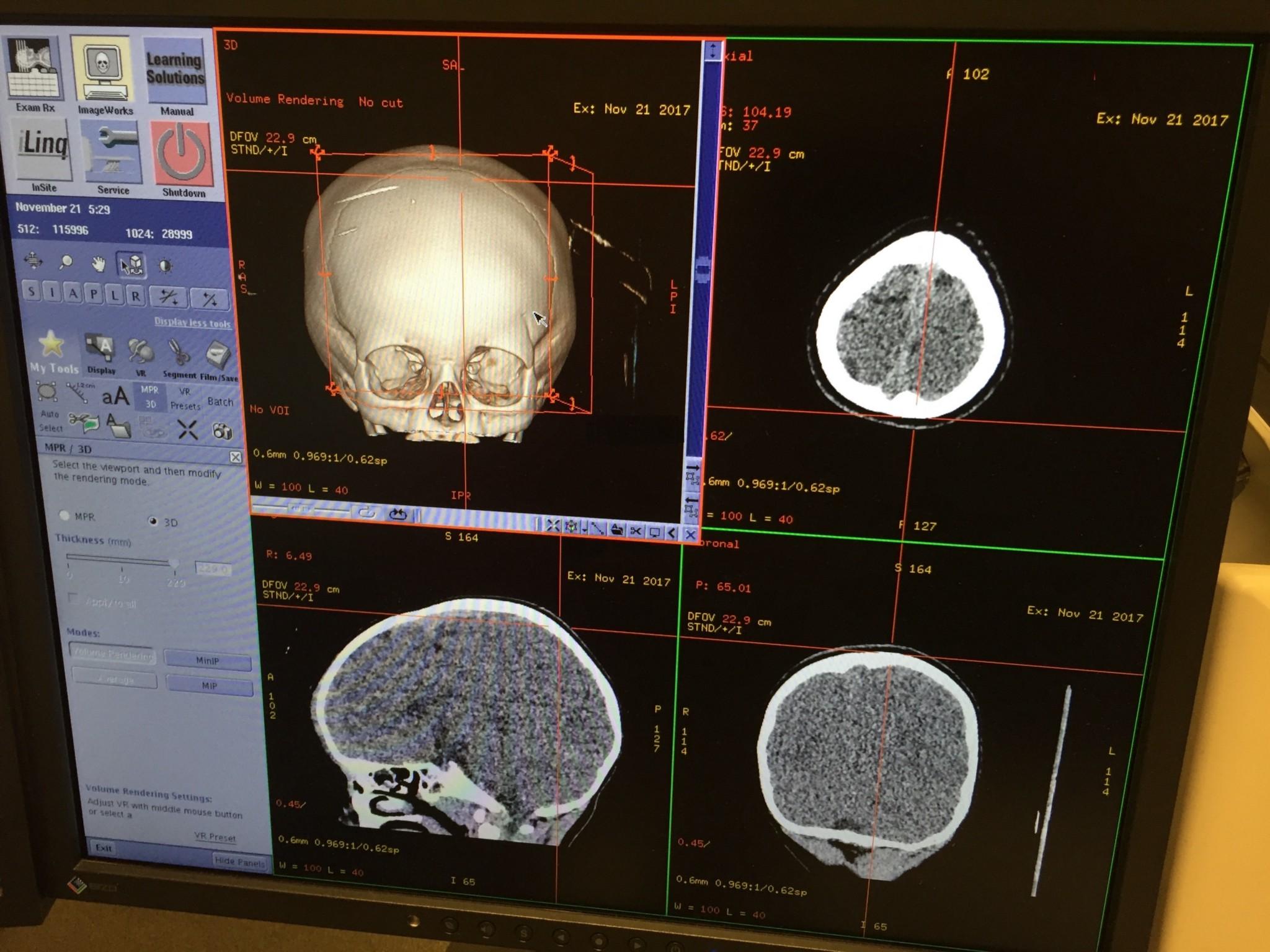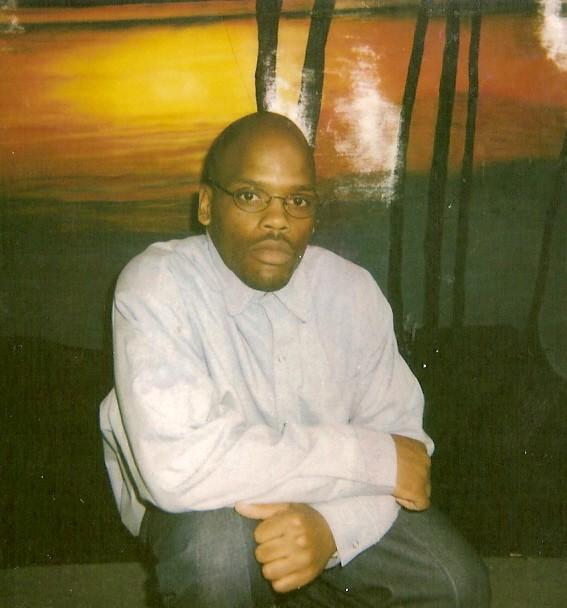Discredited Shaken Baby Science Sent This Father to Jail for 15 Years. His Ordeal Could End This Week.
This story was written by Vince Beiser for The Chronicle of Social Change, a nonprofit news publication that covers issues affecting vulnerable children, youth and their families, and was co-run with Slate Magazine. There was no doubt about the horror of the situation: a four-month-old baby girl was dead. The question facing the jurors was less clear-cut: […]

This story was written by Vince Beiser for The Chronicle of Social Change, a nonprofit news publication that covers issues affecting vulnerable children, youth and their families, and was co-run with Slate Magazine.
There was no doubt about the horror of the situation: a four-month-old baby girl was dead.
The question facing the jurors was less clear-cut: Was the tiny girl’s death accidental, or had she been murdered by her own father?
On the afternoon of November 24, 2001, in Sacramento, California, 18-year-old Zavion Johnson had called an ambulance. His baby daughter Nadia had been sleepy all day, and then had stopped breathing.
Responding paramedics gave her CPR, pushed a breathing tube down her throat, and rushed her to the hospital. There, doctors discovered Nadia had terrible internal head injuries, including a fractured skull. Suspecting abuse, they called the police.
Johnson would later tell his family that earlier that morning, he had accidentally dropped Nadia while showering with her. The girl had hit her head on the back of the cast-iron bathtub, but had seemed to recover. Questioned by police, the frightened teenager at first didn’t say anything about the accident. That impulse backfired horribly on him.
Nadia died two days later. On the day of her funeral, Johnson was arrested and charged with her murder.
At trial, Johnson’s lawyer told the court about the fall in the shower, and more than a dozen people testified that he was a gentle and loving father who had never mistreated the baby.
None of the prosecution’s witnesses said anything to the contrary. Instead, the deputy district attorney held up Johnson’s inconsistent statements as evidence of his guilt. The clincher, however, was the testimony of three medical experts, who all declared that the nature and pattern of Nadia’s injuries could not have been caused by a short fall, but only by violent shaking.

“This is a classic case of Shaken Baby Syndrome,” Deputy District Attorney Chris Cosca told the jury. “We know that this little girl lost her life because of a brutally violent shaking, the violent acceleration-deceleration, the rotational injury, and the impact against a hard surface. That’s the only way it can be explained. And there is no way on earth that she suffered these injuries by virtue of a simple drop in the tub. No way.”
Johnson was convicted of second-degree murder and sentenced to 25 years to life. Sixteen years later, he is still in prison.
But it turns out Cosca was wrong.
In the past year, two of the key medical witnesses who supported the Shaken Baby diagnosis at Johnson’s trial have disavowed their testimony, and the district attorney’s office now supports Johnson’s attempt to have his conviction overturned. On Dec. 8, Johnson and his legal team are hoping to learn whether he’ll now be able to go home.
There used to something close to a medical consensus that certain patterns of injuries can only be caused by shaking. In particular, a so-called “triad” — swelling of the brain, bleeding on the brain’s surface and bleeding behind the retinas — was believed to be solid proof that a baby had been abused in this way. The theory was put forward in the early 1970s by doctors trying to explain the deaths of infants and children with no outward signs of abuse. The diagnosis soon became accepted as scientific fact, and has since been used to convict hundreds of people of harming or killing children.
But over the past 20 years, a body of new research has shown how diseases, genetic conditions and accidents — including short falls — can produce the same constellation of injuries. As a result, faith in “Shaken Baby Syndrome” is unraveling.
The American Academy of Pediatrics recommended in 2009 that doctors stop using the term. A 2015 investigation by the Washington Post found at least 16 Shaken Baby Syndrome murder convictions that have been overturned.
Scores of other cases that collapsed before trial, because of the doubts around the “triad” as evidence. One of those cases was another Sacramento County father, convicted of killing his four-month-old son.
Dr. Norman Guthkelch, a pediatric neurosurgeon who was one of the first to advance the hypothesis behind Shaken Baby Syndrome, recently stated that it is “high time every case of a parent in [prison] for this had his or her case reviewed” because “we went badly off the rails … on this matter.”
There is no definitive accounting of how many people are prosecuted and incarcerated on the basis of this questionable science, but the number is certainly substantial.
A database maintained by the Northwestern University’s Medill Justice Project, last updated in 2015, includes more than 3,000 Shaken Baby Syndrome criminal cases in the United States over the past 20 years, though not all of them are still current. The Washington Post’s investigation estimated hundreds of parents and caregivers were being prosecuted each year, and tallied 1,600 convictions since 2001. At least three such convictions have landed people on death row, according to a recent New Scientist article.
The Innocence Network, a coalition of legal organizations that advocates for prisoners who are wrongfully convicted, is reviewing about 100 cases involving Shaken Baby Syndrome.
Some medical experts still support the use of the diagnosis, now more commonly called “abusive head trauma,” as at least one form of evidence that can help determine whether a child’s death was accidental or the result of violence. Nobody disputes that violently shaking a baby can injure or kill it; the tricky part is figuring out whether that actually happened. And once someone has been convicted of lethal child abuse, convincing a court to undertake that task again is not easy.
The collateral damage for mistaking an accident for maltreatment can extend beyond a jail term. Parents accused of contributing to a child’s death can face the removal of all children from the home.
A 2010 study published in the journal Child Abuse and Neglect notes that “little data are available about what happens to these siblings after the victim’s death.” Using records from Oklahoma’s child fatality review, the study concluded that the presence of young siblings, previous maltreatment reports and the nature of the fatal incident were predictors of removal after a death.
In an essay published in the in the American Academy of Pediatrics News, two physicians argued that the recent controversy over shaken baby syndrome should not take away from correctly diagnosing cases of child abuse.
“Like the back-and-forth over childhood immunizations, this is a false debate,” Howard Dubowitz and Errol Alden wrote in the 2015 piece. “The truth is that child abuse, including abusive head trauma, is a real problem that terribly injures and sometimes kills children.”
From his cell in a state prison in central California, Johnson struggled for years to get judges to take another look at his case, filing appeal after appeal, to no effect. Finally, in 2014, he got in touch with the Northern California Innocence Project, where attorney Paige Kaneb took the case.
“I’d been on another shaken baby case, so I’m a bit obsessed with the issue,” she said.
Over the next couple of years, she gathered materials and got in touch with the experts whose testimony had sent Johnson to prison. In early 2017, two of them came declared they could no longer stand behind that testimony.
“I was following my training and experience, in conjunction with the consensus opinions at the time, in classifying Nadia’s death as having resulted from abuse,” wrote Dr. Gregory Reiber, the forensic pathologist who performed Nadia’s autopsy, in a letter to the court. “However …because of the significant changes in the understanding of childhood head injury that have developed since trial, my opinion about the cause of Nadia’s injuries has also changed.”
Nadia’s injuries, he now concluded, “are consistent with the accidental fall in the bathtub described by Zavion Johnson.”
University of California at Davis neuropathologist Claudia Greco also walked back her testimony, writing that the damage she focused on “does not prove that Nadia Johnson was violently shaken or that her injuries were intentionally inflicted.” A third expert who didn’t testify at trial but reviewed the case later also stated that Nadia’s injuries could have been caused by the fall Johnson described.
Kaneb and her colleagues filed a petition to have his conviction struck down. On October 31, the district attorney’s office threw their support behind it.
“Our decision…was not a difficult one,” Chief Deputy District Attorney Steve Grippi wrote in an email. “Had the information currently available on the topic been available then, there is a reasonable probability that the outcome of the trial could have been different.”
That doesn’t mean Johnson goes free automatically; the DA could still ask for a retrial, though that seems unlikely. Johnson is now awaiting a judge’s order to let him go. After spending nearly half his life behind bars, he is hoping to be back with his family in time for Christmas.
Johnson is still in occasional touch with Nadia’s mother, but by now she has two other kids and a fiancée, Johnson told me via a letter from prison. He’s gotten training as an electrician while locked up, and wants to do community advocacy when he gets out.
“I’m excited and nervous, but scared of failing,” Johnson writes. “All the people that have helped me, I don’t want to disappoint anyone.”
He still thinks often about Nadia, whose picture he has tattooed on his chest.
“I can’t wait to visit her grave,” he writes. “I haven’t been able to do that yet.”
